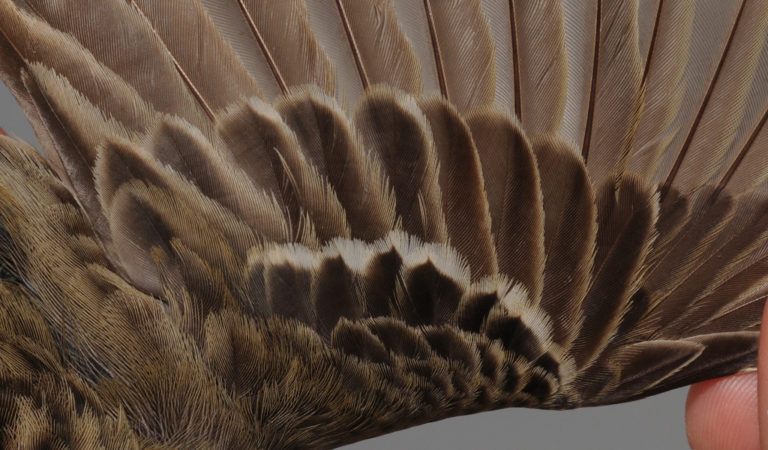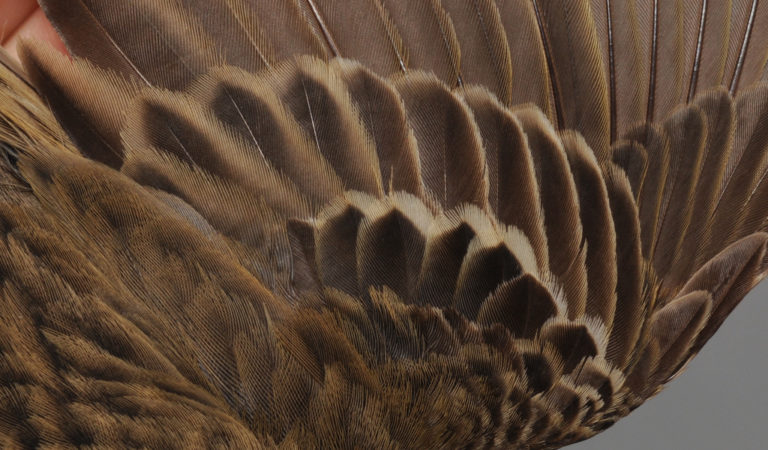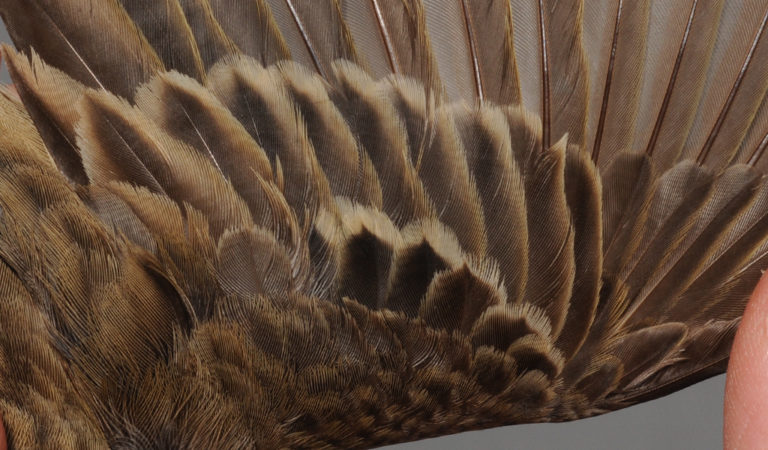

Tree Pipit

2cy May. Aged by the presence of three feather generations in the wing: GC1-4 are juvenile, GC5-9 are post-juvenile and GC10 is pre-breeding from the winter. MC are post-juvenile (intermediatly worn) and the LC shows a mixture of post-juvenile and pre-nuptial feathers. The CC and innermost AL are pre-breeding. [1ET28156]

2cy April. A rather extensively moulted bird, showing juvenile GC1-6 and pre-breeding GC7-10. The four central MC are pre-breeding, while the adjecent ones (on both sides) are post-juvenile. The LC shows a mixture of juvenile (very worn), post-juvenile (intermediatly worn) and pre-breeding (fresh) feathers. CC and innermost AL are pre-breeding. [1ES23635]

3cy+ May. No juvenile feathers present in the wing. GC1-2 and GC8-10 are post-breeding while GC3-7 are pre-breeding. The central three and the single outermost MC are pre-breeding while the rest are post-breeding. The LC shows a mixture of both generations and the CC and innermost AL are pre-breeding. [1ES24716]
More Anthus trivialis:
Ringers’ DigiGuide is sponsored by: